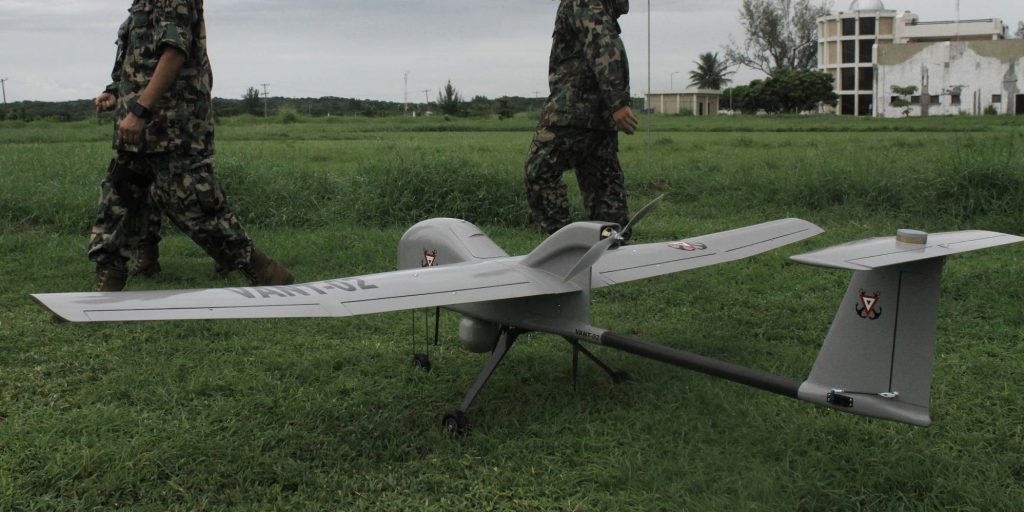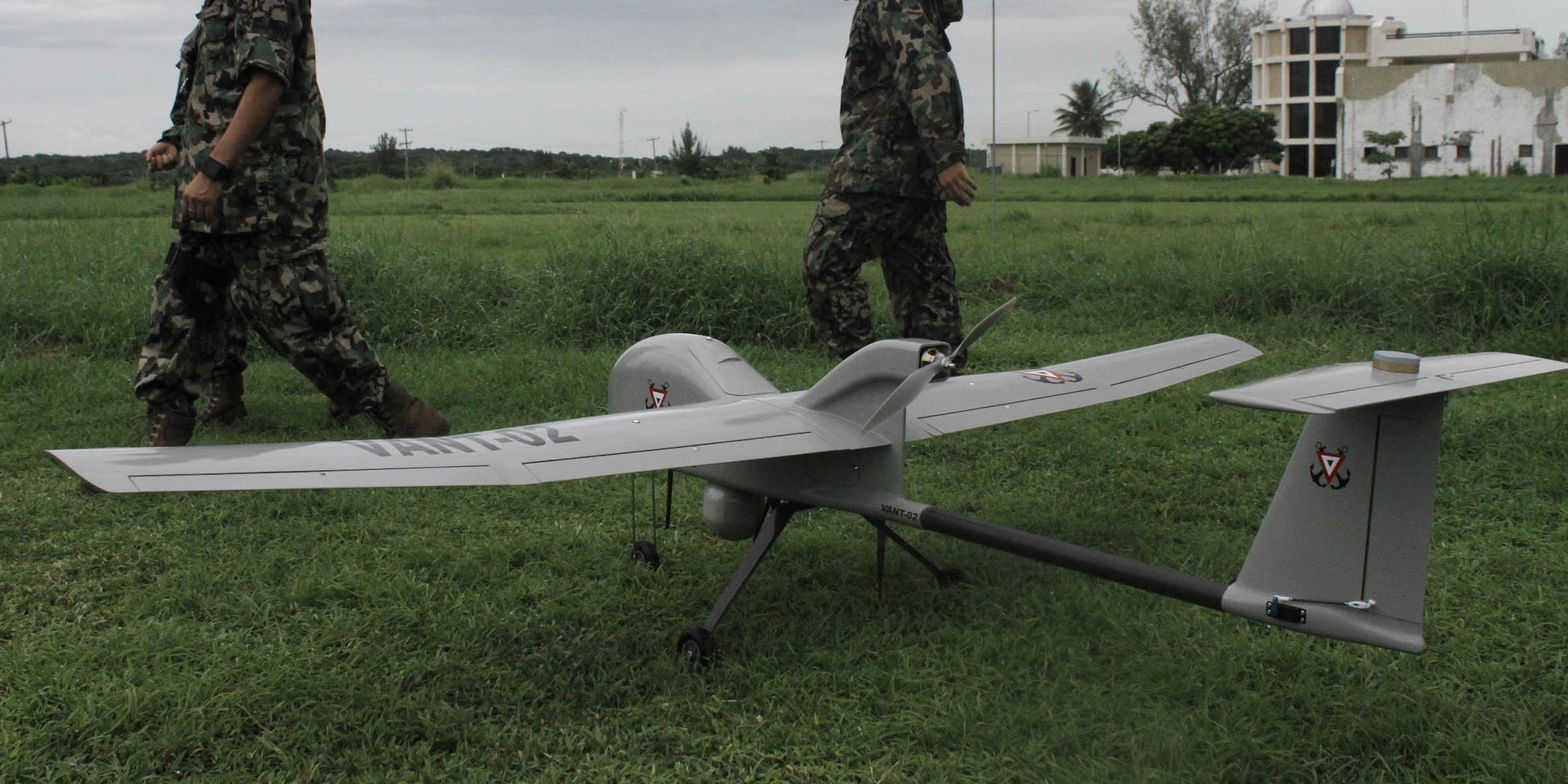
KORAL CARBALLO/AFP/GettyImages
- Mexican criminals groups are making increasing use of unmanned aerial vehicles.
- Those groups use drones to attack enemies in Mexico and smuggle drugs over the US border.
- Smuggling remains limited by the drones' payload, but those loads add up, an operative told Insider.
- See more stories on Insider's business page.
MEXICO – Tweaked commercial drones are now part of Mexican drug cartels' arsenal for attacking enemies and smuggling drugs into the US, according to recent reports and cartel operatives interviewed by Insider.
The bee-like sound of flying drones has become a new symbol for terror in small Mexican towns like Aguililla in the southwestern Mexican state of Michoacan.
Families in Aguililla have been reporting bomb-strapped drones flying over their homes since early this year, in a new tactic used by cartels to fight for their turf.
The latest attack occurred in Tepalcatepec, a municipality in southwestern Michoacán state, on May 4, when a large group of armed men – reportedly members of the Cartel Jalisco Nueva Generacion (CJNG) – used drones loaded with C4 explosives and shrapnel to attack a group of enemies.
A similar attack occurred a month earlier, in which two local police officers were injured by a drone in Aguililla.
Mexican Defense Secretary Luis Crescencio Sandoval González confirmed the attack and said weaponized drones have also been found in Guanajuato and Jalisco, two states with a strong CJNG presence.
Crescencio Sandoval said the attacks "have not been effective since drones can't carry enough explosives to harm a person or an institution."
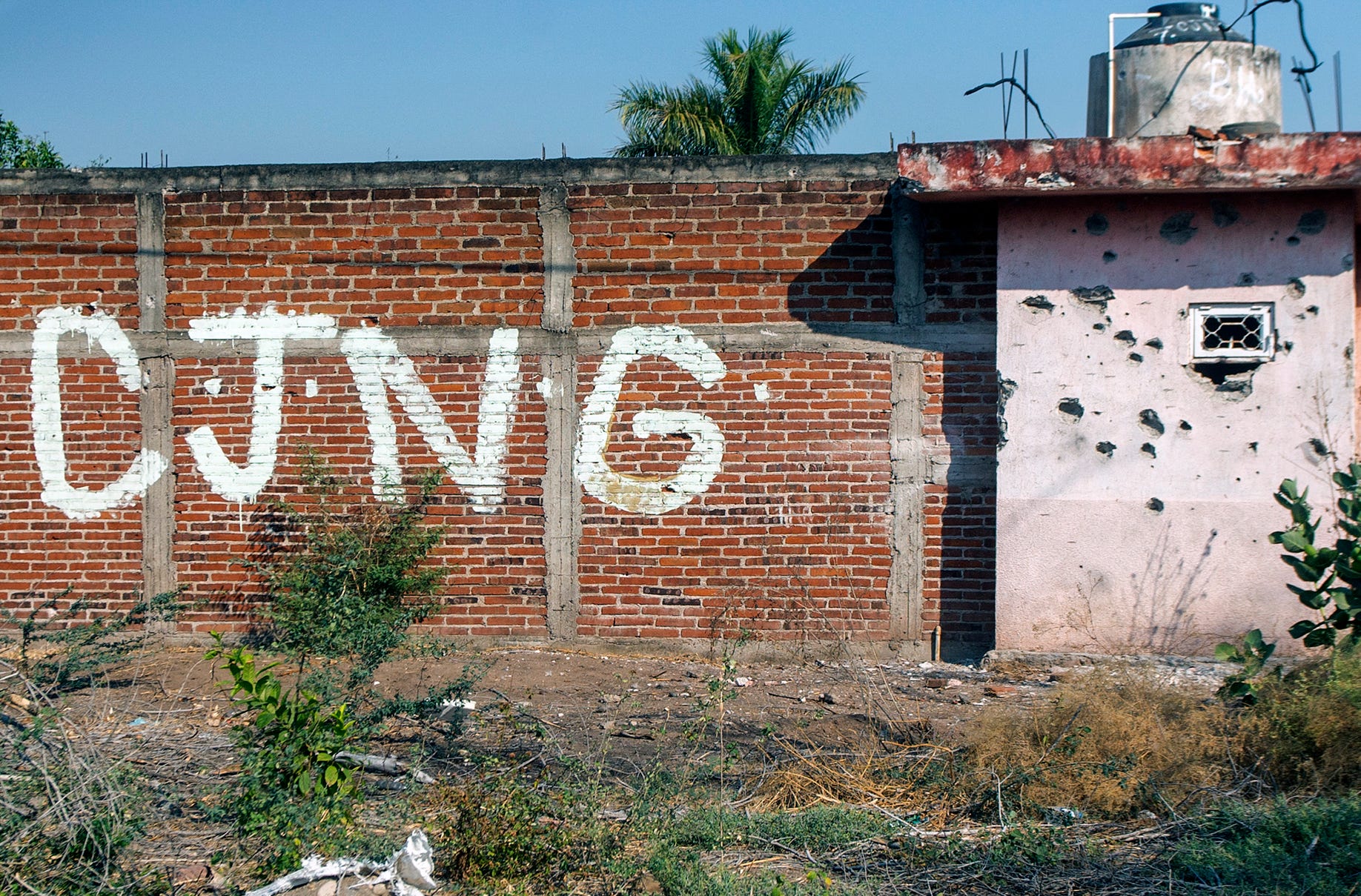
ENRIQUE CASTRO/AFP via Getty Images
Aguililla and Tepalcatepec are two strategically located towns in the area of Tierra Caliente, an entryway to opium-cultivation areas and a long-disputed territory between organized-crime groups seeking to control drug routes from the fields to the US border.
Aguililla is also the birthplace of Nemesio Oseguera, aka "El Mencho," who is widely believed to be the leader of the Cartel Jalisco Nueva Generacion.
The drones used recently as bombardiers are commercial drones bought in the US and given rudimentary modifications to serve as weapons or as drug mules, according to an operative with the Cartel Jalisco Nueva Generacion, who spoke to Insider anonymously to protect their identity.
"These are bought in the US, in California or by internet. They are normal drones, like a Mavic or Mavic 2. They can fly somewhat far and carry some load," the operative said.
On July 25, alleged members of Carteles Unidos, an alliance of criminal groups fighting Cartel Jalisco Nueva Generacion, reported the recovery of a drone carrying a duct-taped plastic container filled with what was said to be plastic explosives.
The same group accused a man called "El Chino drones," allegedly a former Mexican marine, of "loading drones with C4 explosives" and conducting drone attacks for the Cartel Jalisco Nueva Generacion.
Although the operative interviewed by Insider could not comment on "El Chino drones," he confirmed the use of plastic explosives and grenades on the attacks.
"We use C4 or Tovex to make the explosives. It's a little bit harder to make those, but they are very effective. In a simpler form we use hand grenades taped to a drone, remove the secure [lever], and fly it toward target," he said.
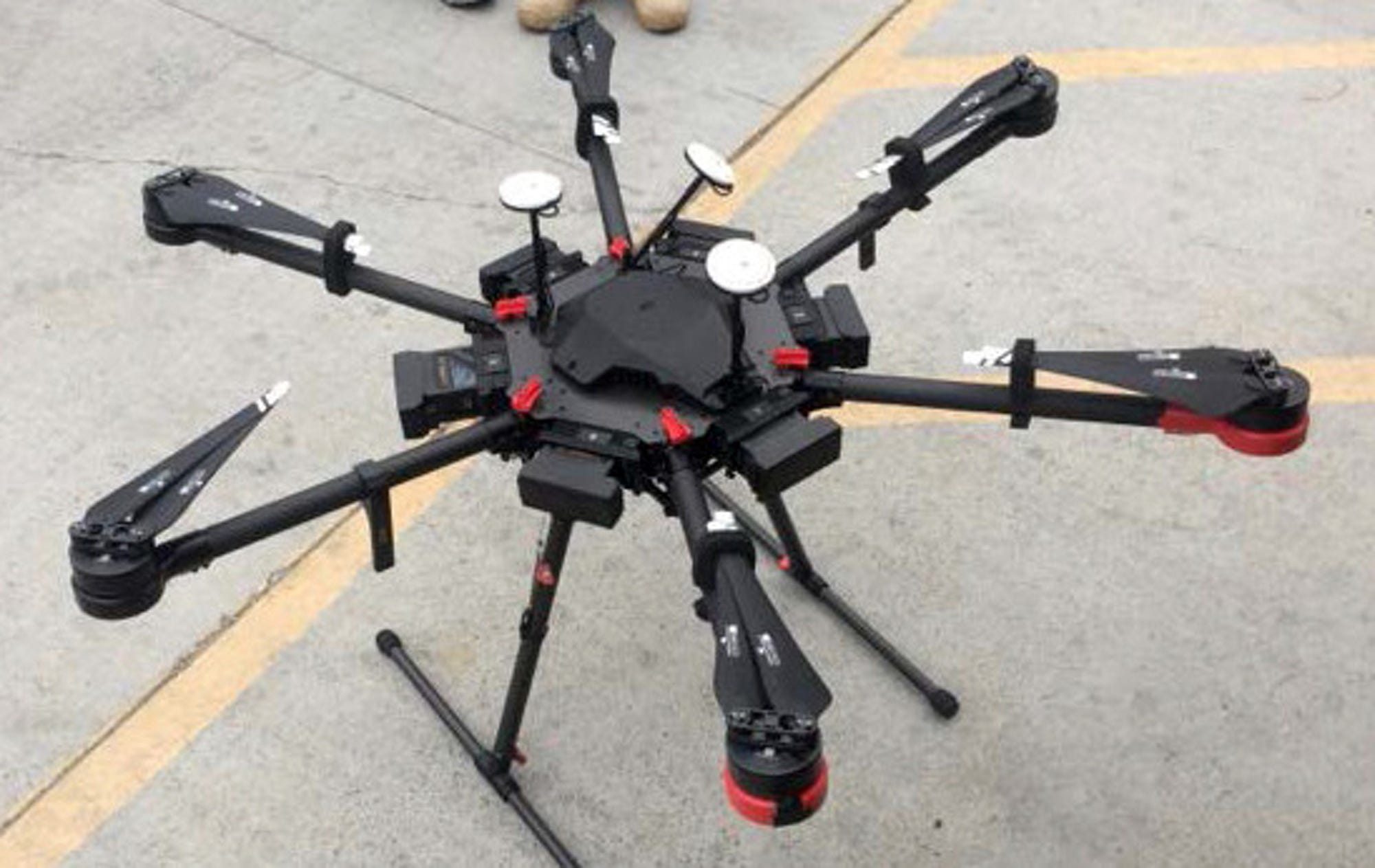
US Border Patrol via AP
The operative, who described himself as a "freelancer" and not as part of the cartel, said he is being paid to fly drones and teach others to fly drones in the area.
"I get paid around $350 to fly a drone, and I'm teaching some of them. It is not that easy to fly a drone. You have to know how to go to target quick and obviously not to crash with something else," he said.
But the accessibility of the kinds of drones recently used by cartel members and the low level of skill required to operate them make these kinds of tactics available to virtually anyone.
The operative said they recently learned the Sinaloa Cartel "is also using drones against contras [rivals], but very few people know of this."
Mexican authorities plan to use anti-drone systems to monitor and disable drones, according to Mexico's Defense Ministry.
"Drones operated by terrorists and other malicious groups represent a wide variety of risks for security, especially at facilities such as airports, essential infrastructure, prisons, stadiums, military bases, and strategic facilities, among others," the ministry said in a document obtained by El Universal.
'You start little by little'
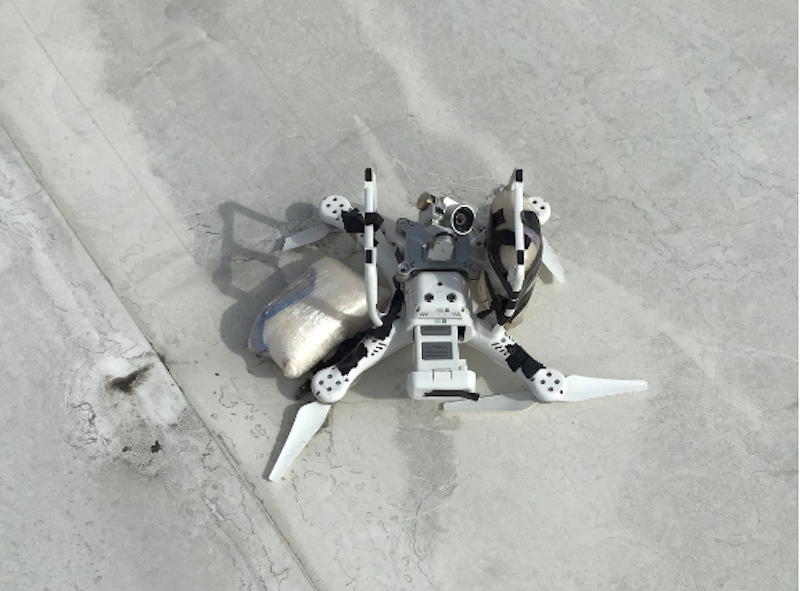
Chief Patrol Agent Aaron M. Heitke/Twitter
But explosives are not the drones' only cargo. For some years now criminal organizations have used drones to fly drugs into the US.
The first seizure of a "narcodrone" was in Calexico, on California's border with Mexico, in April 2015. It had been used to carry a total of 28 pounds of heroin over the border in four trips.
Over the next five years, Customs and Border Patrol headquarters reported 170 such incidents - 84 in 2018 and 2019 alone - but didn't disclose how many drones were involved, according to Air & Space magazine.
US authorities' concerns about drones are increasing. In 2019, CBP announced the purchase of six counter-drone systems to detect and attack drones' radio-frequency communications. CBP put out another request for similar systems earlier this year.
In January 2021, a Border Patrol agent told a local CBS affiliate that there had been "a slight uptick" in drone activity in San Ysidro, a district of San Diego on the border of Mexico.
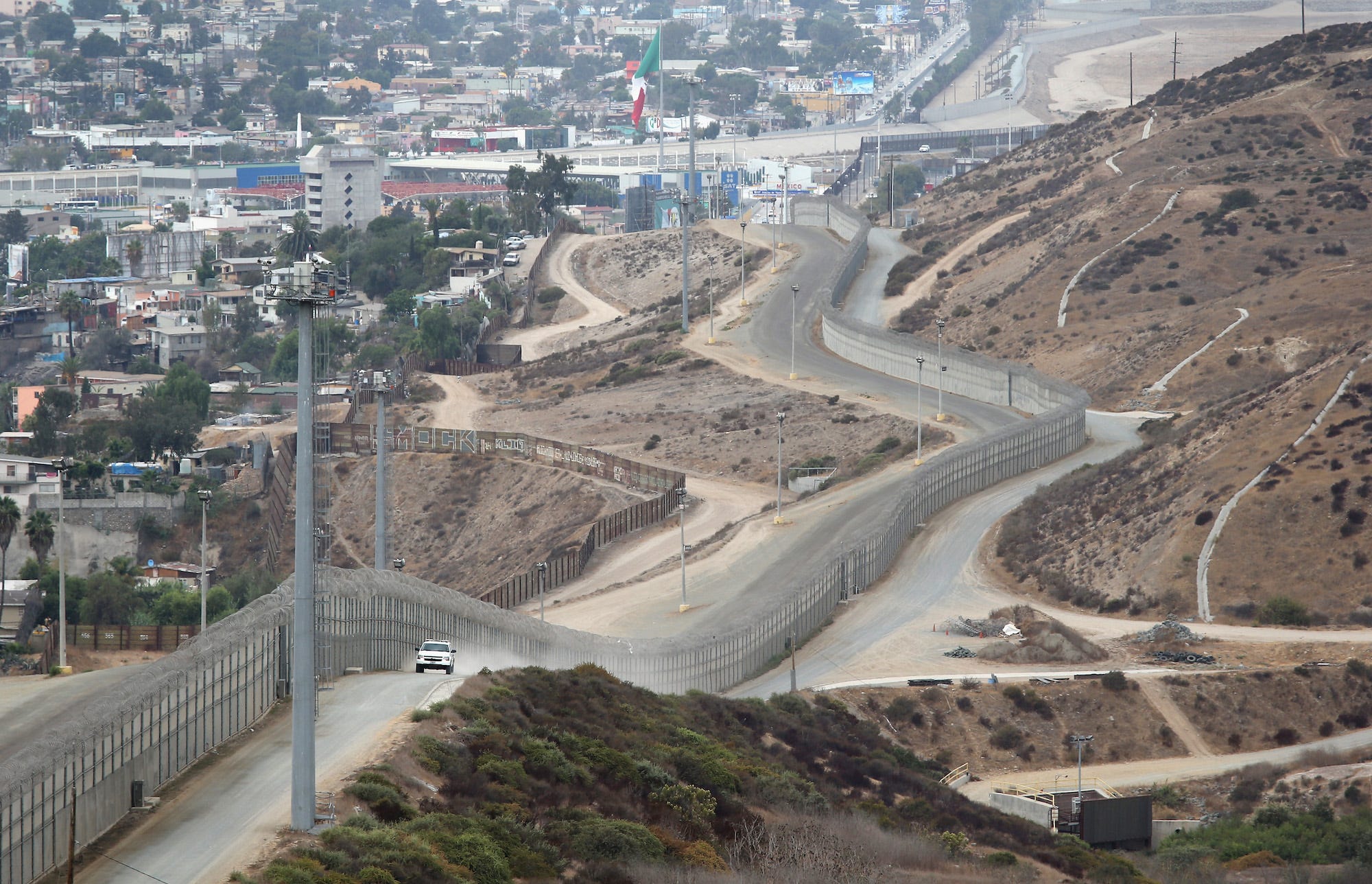
John Moore/Getty Images
In February, Border Patrol agents recovered a drone carrying two bags of methamphetamine that crashed onto the roof of a business in San Ysidro.
"The drone had 1 kilo of meth taped to it. Agents are investigating," Chief Patrol Agent Aaron Heitke said in a tweet with photos of the drone and the drugs.
Cartels usually tape drugs to a drone to fly over the border wall from Mexico or across desert areas and deliver the cargo to a previously agreed-upon location in the US.
"For drugs, we first watch [the area] with the drone. You can fly around the wall and see if there is anyone around and at the same time be on the phone with someone on the other side," the operative told Insider.
The amount a commercial drone can carry is very limited, but the operative described it as a long-term effort.
"Drones are usually for small deliveries, very low quantities and several times a week. It's like a flying ant, you start little by little, but at the end you have built a huge stack of drugs," the operative said.
